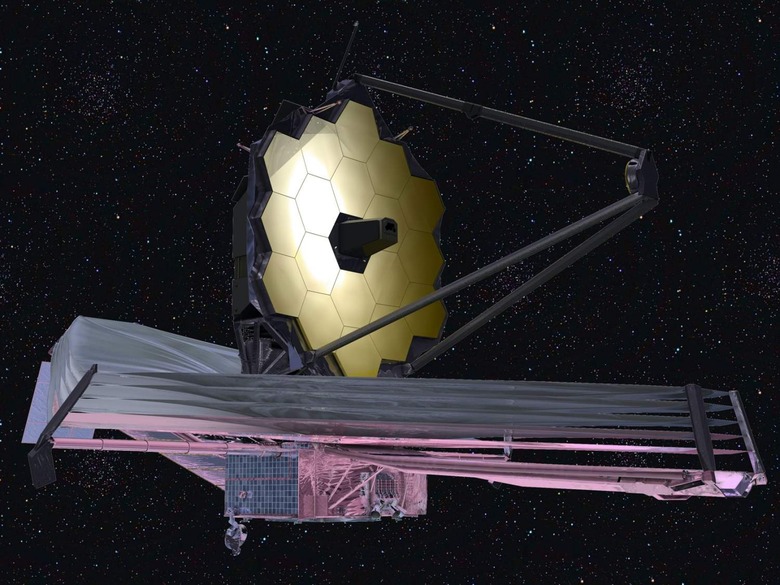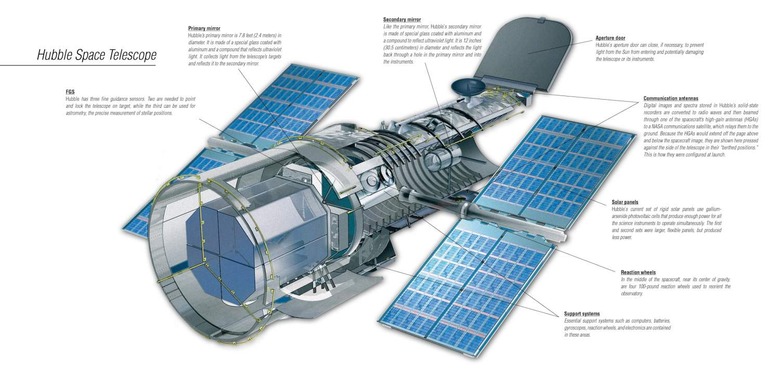Hubble Back Online After Glitch Reveals Telescope's Secret Hardware Failure
The Hubble Space Telescope is back online and resuming science operations, NASA has confirmed, though not every part of the aging instrument is working as it should. The telescope – which was put into orbit in 1990 and has since been instrumental in unlocking the secrets of distant stars and galaxies – switched into its protective safe mode last weekend.
That came after a software error was identified within the spacecraft's main computer, NASA said. It's a cautionary process, designed to halt any cascading errors and lock the telescope into a stable configuration until the problem can be identified and a fix developed.
In this case, it turned out that a recent software patch had an unexpected side-effect when it was uploaded to Hubble. The new software was intended to compensate for fluctuations from one of the spacecraft's gyroscopes, which are used to help it orient itself as it locks onto new targets. The patch was correct, but the software itself turned out not to have the right permissions to write to a specific memory location. That tripped an error, and thus put Hubble into safe mode.
Although unintended – and NASA quickly moved to rewrite the patch so as to avoid the same issue – the glitch actually helped identify another, potentially more serious problem than the mission operations team at Goddard Space Flight Center was unaware of.
"In entering safe mode on Sunday, however, the team discovered that the aperture door located at the top of the telescope failed to automatically close," NASA says. "This door is a safeguard designed to keep the Sun's damaging light and heat out of the telescope's interior, protecting its sensitive instruments and their surroundings. It serves as a safety net if Hubble accidentally points in the direction of the Sun due to an error or hardware problem."
It's unclear when, exactly, that mechanical problem arose. The aperture door hasn't actually been required in Hubble's 30+ years of operations, NASA points out. Although the primary motor does not appear to be responding, the backup motor does seem to be working, and so the team has switched that over to primary while it works on other fixes. Science operations resumed at 8pm EST on Thursday, March 11, NASA confirmed.
Meanwhile, another issue has arisen in the Wide Field Camera 3. That remains suspended, with a low voltage problem identified.
Hubble wasted no time once the majority of its systems were back online. The Space Telescope has already completed a new observation, using its Cosmic Origins Spectrograph instrument to map gas flows in active galactic nuclei.

While Hubble continues to enable new scientific discoveries with the data it collects, operating the Space Telescope has become as much about working past the limits of its aging hardware as it is gathering fresh insight about the universe. The spacecraft's operational lifespan has been extended several times, and experts suggest it could well hold out until 2030-2040 barring unexpected problems.
Nonetheless, work on a replacement of sorts has been underway for some time. The James Webb Space Telescope is expected to launch in October 2021 – though the project has seen its own share of delays before now – and will use a complex series of mirrors to make observations across long-wavelength visible light through mid-infrared. While that will overlap in part with the observations Hubble makes, it extends significantly, allowing NASA to observe high redshift objects that are significantly older and more distant than Hubble can see.

